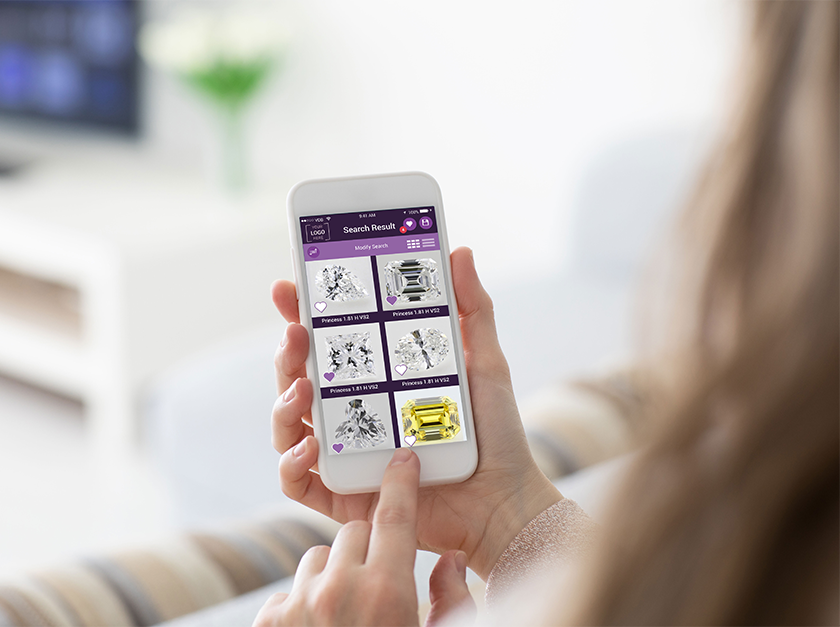 Informal polling and discussion with our customers has taught us an interesting fact: jewelry business owners tend to restrict access to mobile apps and technology among their sales staff. Let’s untangle why this is true, and how making a few simple changes to facilitate mobile sales tools could really help your business.
Informal polling and discussion with our customers has taught us an interesting fact: jewelry business owners tend to restrict access to mobile apps and technology among their sales staff. Let’s untangle why this is true, and how making a few simple changes to facilitate mobile sales tools could really help your business.
When Protecting Productivity is Less Productive
We suspect that productivity is the big issue here. After all, you had to be hiding under a rock these past 10 years if you haven’t seen at least 10 articles talking about how social media and internet surfing are stealing employee time and attention while on-the-job. Yes, it’s true that some people waste time using social media. But before social media, they wasted it on something else! We knew a woman at a previous job that spent 2-3 hours each day playing solitaire on his personal computer. And before that, a guy who spent so much time gabbing at co-worker cubicles that his time-wasting behaviors had an exponential effect! But for some reason, business owners have become obsessed with social media use and wasted time.
Business experts tell us that the one way to make sure time is not wasted is to have clear expectations for each employee, and attach those expectations to measurable results. In fact, they say that’s the only way to make sure time is not wasted. Banning one thing – like social media, or a coffee station, or fraternizing – will simply ensure that the time-wasters find a different, unregulated way to waste time. But if they have to hit measurable objectives, they can’t find a way around that.
On the other hand, banning the use of social media at work – particularly among sales staff – can inhibit sales. Why? Because today’s buyers, both B2B and B2C, rely more heavily than ever on mobile sales tools like text, Twitter, Facebook Messenger, WhatsApp, and Instagram. They use these tools to send questions to brands, discuss what they like and dislike, and generally build relationships with their sales and business associates. If your sales people aren’t actively using social media while at work, they are missing out on the modern economy’s equivalent of the 1970s salesperson’s Little Black Book.
What’s With the Group Email Address?
Another thing we’ve noticed is that businesses (mostly retail – this is less true at wholesale) tend to make all their employees share group email addresses. That may be efficient from an information-sharing standpoint, but it’s not great for building relationships. In fact, digital marketing research has shown that email has the greatest ROI of all digital media for the past 5 years and counting.
If the concern is that the information in email communications needs to be available to other members of the company, that can be resolved by attaching all company email addresses to a strong CRM solution. That way, a customer’s email communications will be attached to their customer file – no matter who at the company they have communicated with.
If the concern is that it costs money to give out individual addresses, then a cost/benefit analysis is in order. For example, if you use Google Business for your email solution, then each individual email address costs $50 per year. If you’re using Microsoft Outlook 365, the individual email addresses cost $60 per year. But what one sales person can accomplish using email will more than pay for the cost of that license! Consumers don’t like communicating with a generic address like sales@jewelrystore.com, or (worse), Info@jewelrystore.com. They want to work with Jane@, Mike@, Alicia@ – real people. Real email addresses.
Trust is Hard . . . But Essential
Of course, once you open the door to having social media and individual email addresses, you have to deal with your discomfort with sales staff having a phone in their hands or on their belt all day. While a salesperson should never be checking email while serving a customer, there’s nothing wrong with the phone being right there, ready to use. And it can be really useful! Instead of dragging a customer over to a terminal or going and grabbing the closest available Ipad, a salesperson can easily pull up your website, or a brand website, or the VDB App, and quickly pull up products and information of benefit to the customer.
The dynamics of business have changed dramatically in the past 10 years, so it’s no surprise that the adjustments we need to make can feel pretty dramatic. But the only thing constant is change, so we need to adapt! And when we do, we can add profits to the bottom line and loyal customers to the family.